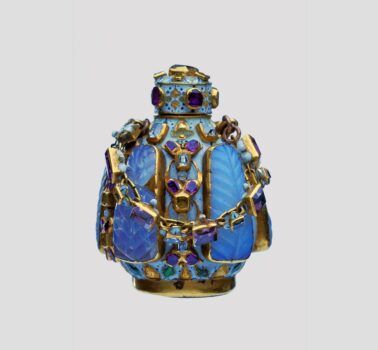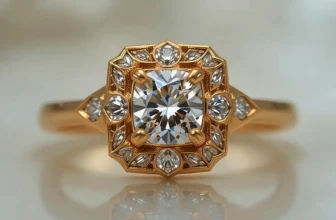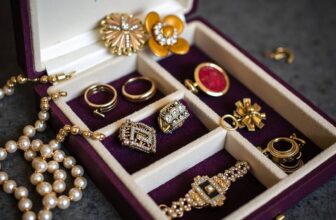Jewels of the Cheapside Hoard: London’s Lost Treasure
The Unearthing of a Hidden Past
| Invest in Hidden Masterpiece: Rare Antique Oil Paintings For Sale. Limited Originals Available 💰😊 Are you looking for authentic hidden masterpiece? Explore old master antique oil paintings from the Renaissance and Baroque eras. From 16th-century portraits to 18th-century landscapes. Authenticity guaranteed, Old Master antique oil paintings for sale. Shop Now! 🎨 Renaissance And Baroque Art Landscape Antique Paintings Old Master Portrait Paintings |
In the summer of 1912, construction workers in London’s Cheapside district were engaged in demolition work near St. Paul’s Cathedral. Beneath the rubble of an old building at 30–32 Cheapside, buried deep under centuries of brick, earth, and dust, they struck upon something wholly unexpected: a collection of glittering jewels, gold, and precious stones unlike anything the city had seen before. This discovery would later be called the Cheapside Hoard, and it remains the single greatest cache of Elizabethan and Jacobean jewelry ever unearthed.
The workmen who stumbled across it had no inkling that they were standing on a time capsule of Renaissance wealth and global trade. Hidden away, possibly during the English Civil War, this treasure trove lay undisturbed for nearly 300 years. Its discovery not only revealed the artistry of 16th- and 17th-century goldsmiths but also told a story of London’s place in an expanding world economy, where gems from South America, India, the Middle East, and Europe converged in the bustling commercial hub of Cheapside.
What Is the Cheapside Hoard?
The Cheapside Hoard is a collection of nearly 500 pieces of fine jewelry dating to the late 16th and early 17th centuries. Unlike most archaeological finds that tend to be fragmentary, the Hoard contained an extraordinary array of intact items, from gemstone rings and pendants to chains, brooches, and even perfumes encased in emeralds.
The collection includes:
Rings: Decorated with diamonds, rubies, emeralds, sapphires, and garnets, crafted in settings that range from delicate filigree to bold Renaissance designs.
Earrings: Some designed as pear-shaped drops, others as intricate clusters, often set with pearls imported from the Persian Gulf or the Caribbean.
Chains and Necklaces: Long gold chains, some designed for layering, often hung with pendants featuring miniature cameos or religious motifs.
Pendants and Lockets: One of the most famous pieces is an emerald locket carved into a tiny perfume bottle, hollowed out to contain scented oils.
Watches: Miniature watches, including one shaped like a scallop shell, showcasing both the artistry and the rising importance of timepieces in the 17th century.
Uncut and Cut Gems: From topazes mined in Brazil to Indian diamonds, Colombian emeralds, Burmese rubies, and Persian turquoise.
The Hoard is remarkable not only for its quantity but for the diversity of its stones, representing the vast global trading networks of the time. London goldsmiths of the Elizabethan and Jacobean era were sourcing materials from across the known world, and the Hoard embodies this internationalism.
The Mystery of Cheapside Hoard
One of the most intriguing questions about the Cheapside Hoard is why it was buried in the first place. Theories abound, but no definitive answer exists.
The most widely accepted explanation ties the Hoard to the English Civil War (1642–1651). During this turbulent period, goldsmiths, merchants, and wealthy Londoners often concealed valuables to protect them from looting or confiscation. The building where the jewels were found was once owned by the Worshipful Company of Goldsmiths, the guild responsible for regulating the craft in London. Some scholars speculate that a goldsmith hid the collection for safekeeping and was either killed or unable to return to retrieve it.
Another possibility is that the Hoard belonged to a jeweler who dealt in both wholesale and retail trade, using the cache as his working stock. Perhaps he planned to recover it after danger passed, but fate intervened. Whatever the case, the jewels slumbered beneath Cheapside for centuries until that fateful morning in 1912.
The Cheapside Hoard offers a rare, almost cinematic glimpse into the luxury market of Tudor and Stuart England. While portraits of Elizabeth I and her courtiers show them bedecked in pearls and gemstones, very few actual surviving pieces of jewelry from this era exist. Most treasures were melted down, refashioned, or lost in the upheavals of history.
Thus, the Hoard is priceless as a cultural artifact. It illuminates the skill of London’s goldsmiths, who were at the cutting edge of design. It also highlights the reach of England’s maritime empire. Gems from India, Persia, Brazil, and the New World underscore the fact that London was already becoming a hub of global commerce.
What Are the Jewels of Cheapside Hoard Worth?
Putting a monetary value on the Cheapside Hoard is challenging, for several reasons. First, its worth goes beyond material wealth: its historical, cultural, and artistic significance is incalculable. Second, individual items could command extraordinary sums on the open market, but the Hoard is not for sale, it is considered national treasure.
Still, estimates suggest that if the collection were auctioned piece by piece, it could fetch hundreds of millions of pounds. Even a single 17th-century emerald watch, one of the Hoard’s standout items, might command millions today. The entire collection, however, is considered beyond price, preserved for study and public appreciation.
Who Owned the Cheapside Hoard?
The true owner of the Hoard remains a mystery. No records or inscriptions link the jewels to a specific goldsmith or merchant. But circumstantial evidence points strongly to a member of the Goldsmiths’ Company of London.
In the early 1600s, Cheapside was the heart of the jewelry trade. Shops and workshops lined the street, selling everything from simple silver rings to dazzling gemstone pieces. It is believed that the Hoard may have been the stock-in-trade of a working jeweler who dealt both in raw materials and finished products.
The identity of the hoarder has been lost to history, swallowed up by the chaos of the Civil War and the Great Fire of London (1666). What survives is the tangible evidence of his world, a treasure chest of Renaissance glamour.
Where Are the Jewels of Cheapside Hoard Today?
After their discovery, the jewels eventually made their way into the collection of the Museum of London, where they remain today. The Hoard has been displayed in part since the 20th century, though major exhibitions are rare. The Museum of London staged a landmark exhibition of the Hoard in 2013, attracting global attention and rekindling fascination with the find.
Today, the jewels are preserved under strict security and controlled conditions to prevent deterioration. They are not all on permanent display; some pieces remain in storage, available for research or occasional special exhibitions.
For jewelry historians, gemologists, and lovers of art alike, the Cheapside Hoard offers an unparalleled window into a vanished age of craftsmanship, luxury, and intrigue.
Stories Within the Hoard
Part of the Hoard’s magic lies in its individual items, each whispering a tale of its journey.
The Emerald Perfume Bottle: Carved from a single Colombian emerald, this tiny vessel could hold perfume. It demonstrates not only extraordinary craftsmanship but also the fascination with scents in Elizabethan society.
The Sardonyx Cameo of Queen Elizabeth I: A carved portrait of the Queen herself, mounted in gold, testifies to the cult of monarchy and the role of jewelry in projecting political power.
The Scallop-Shell Watch: Watches were prestige items, symbols of wealth and learning. This one, shaped like a seashell, shows the playful artistry of its maker.
Intaglios and Cameos: Many stones are engraved with classical figures, reflecting the Renaissance passion for antiquity.
Opals and Garnets: These semi-precious stones remind us that not all jewels were solely about dazzling wealth, color and symbolism mattered too.
The Hoard in Popular Imagination
Since its discovery, the Cheapside Hoard has sparked the imagination of writers, historians, and treasure enthusiasts. It is a reminder that beneath the everyday streets of London, layers of forgotten history lie waiting. The jewels conjure images of secret hiding, hurried burials, and an owner who never returned.
Its story resonates because it blends mystery, wealth, artistry, and tragedy. The jewels are at once a celebration of human creativity and a haunting reminder of the fragility of life in turbulent times.
Jewels of the Cheapside Hoard Legacy of Glittering Shadows
The Cheapside Hoard remains one of London’s most dazzling archaeological discoveries. From its unassuming burial under the streets of Cheapside to its glittering revelation in 1912, it has offered scholars and the public alike an irreplaceable glimpse into the Renaissance world.
It tells us of London as a hub of trade, where gems from across the globe converged. It reveals the artistry of Elizabethan and Jacobean goldsmiths. And it tantalizes us with unanswered questions: Who buried it? Why was it never retrieved?
Today, safeguarded in the Museum of London, the Hoard’s jewels remain a bridge to the past. They are not merely ornaments of wealth, they are fragments of human stories, frozen in gold and gemstone, whispering of love, power, commerce, and survival.
As long as they endure, the Cheapside Hoard will continue to sparkle not just as a treasure of jewels, but as a treasure of history. Image/ londonmuseum





